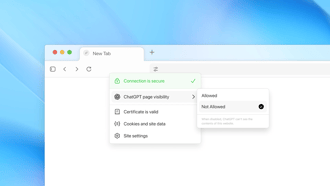A high-performance sports car is only as powerful as its engine. Machine learning models are similar, as even the most sophisticated algorithms can fail to meet expectations without the proper adjustments.
Model tuning is an experimental process of refining a machine learning model to improve performance and ensure accuracy, optimize hyperparameters, and ensure real-world relevance. Elevating your model and unlocking its full potential requires understanding crucial techniques, tools, and best practices. Explore model tuning in machine learning, why it is essential, and game-changing strategies for successful tuning.
What Is Model Tuning in Machine Learning?
Model tuning adjusts the hyperparameters of a machine-learning model. Hyperparameters are settings that control the model’s learning process, such as learning rate, number of epochs, number of hidden layers in a neural network, and the depth of a decision tree. They are set up manually before training and are not learned from the data itself, like model parameters are. Hyperparameters affect the architecture, learning speed, and overall performance of the model.
Defining Model Tuning
Model tuning involves deploying various techniques with the purpose of enhancing accuracy, generalization ability, and efficiency of a machine-learning model. It can transform a good machine learning model into a superior model by making it more precise, efficient, and skilled at generalization.
Hyperparameter Tuning vs. Parameter Optimization
Both hyperparameter tuning and parameter optimization play roles in machine learning, but they affect different processes. The key difference is hyperparameter tuning refers to adjusting pre-set values that control the model’s learning process. Parameter optimization focuses on model parameters that are learned during the training phase.
Why Proper Model Tuning Is Essential for ML Model
Machine learning models must be able to be used in real-world applications to be effective, making model tuning critical for the following reasons:
- Enhanced accuracy: Fine-tuning hyperparameters and model settings allows the machine-learning model to learn more efficiently. This leads to improved predictions on training and unseen data.
- Prevents overfitting and underfitting: Tuning the model balances complexity, which reduces the risk of overfitting (when a model fits too closely to a training dataset) and underfitting (when a model is too simple to capture the underlying patterns in data).
- Optimal resource utilization: By selecting hyperparameters that speed up convergence and reduce the computational resources needed, tuning can make model training more efficient.
- Better generalization: A well-tuned model is more capable of performing optimally across various datasets, ensuring it generalizes effectively to new data and real-world applications.
3 Techniques for Effective Model Tuning
The goal of model tuning is to find the optimal combination of hyperparameters that improve model performance and maximize its effectiveness. This is done through the following tuning methods:
Grid Search
This method involves testing all possible combinations of hyperparameters within a defined range. The learning algorithm trains the model using each combination of hyperparameter values and evaluates performance using cross-validation to select the highest-performing set.
The pros of this technique include:
- Simple to implement and easy to understand
- Guarantees the best possible combination within the grid is found to achieve model optimization
- Ensures no hyperparameter combination is overlooked
The cons of the technique include:
- Tests all combinations, including those that might not be relevant, which can be time-consuming
- Necessities high resource consumption
Random Search
Random search randomly selects hyperparameters from predefined ranges. It does not evaluate all possible combinations like a grid search. The technique selects possible outcomes for a predetermined number of trials or until a performance threshold is met. Random search is generally used instead of grid search in large search spaces. However, because it is not exhaustive, a random search may miss the correct combination, which can result in needing more trials.
Bayesian Optimization
A more advanced model tuning technique, Bayesian optimization, uses a probabilistic model to predict which set of hyperparameters will yield the best performance. Rather than extensively or randomly testing combinations like grid search and random search, this modern approach intelligently explores the hyperparameter space based on previous trials. This enhances the efficiency of the search to achieve hyperparameter optimization. By significantly narrowing the search, this technique can find better results in fewer trials.
Top Strategies for Successful Model Tuning
Successfully tuning a machine learning model requires careful planning, strategic execution, and a deep understanding of the underlying model and data. To maximize the effectiveness of the model-tuning process, consider the following:
- Start with a baseline model prior to tuning to help measure improvement as you apply tuning techniques
- Use cross-validation for reliable metrics to receive a more reliable estimate of generalization ability
- Monitor for overfitting vs. underfitting to improve generalization
- Optimize for resource and time efficiency
Common Challenges in Model Tuning and How to Overcome Them
Model tuning and finding optical hyperparameters can be a complex process, leading to several challenges. Common obstacles of the process include:
Avoiding Overfitting in Model Tuning
Overfitting, which occurs when a model learns the training data too closely, including noise and specific details, is a common challenge in model tuning. It leads to poor performance on new data. Using regularization techniques that simplify models can help avoid overfitting by penalizing complex parameters.
Managing Computational Resource Constraints
When it comes to model tuning with large datasets, such as deep learning, significant computational power is needed. A solution is to leverage cloud-based resources to access powerful GPUs and parallel computing capabilities. Additionally, if computational resources are limited, consider using simpler models that are less resource intensive.
Misinterpreting Validation Metrics
The specific model will determine the necessary evaluation metrics. Using the incorrect metric can result in misleading conclusions regarding model accuracy and performance. Use cross-validation to ensure performance metrics are consistent across various subsets of the data.
Tools and Frameworks for Model Tuning
There are several tools and frameworks available to help streamline workflows and optimize the model-tuning process, making it easier to identify optimal hyperparameters.
Popular Model Tuning Tools
- Scikit-learn’s GridSearchCV & RandomizedSearchCV: This tool offers grid search and random search.
- Keras Tuner: This tool is designed for Keras and TensorFlow models
- Ray Tune: This option focuses on scalable hyperparameter tuning across multiple nodes and GPUs
- Hyperopt: This tool is a Python library designed for optimizing complex machine learning
- Optuna: This is an open-source hyperparameter framework that uses modern optimization algorithms.
Cloud-Based Solutions for Model Tuning
- AWS SageMaker
- Azure ML Studio
- IBM Cloud
- Google Cloud AI Platform
How CloudFactory Enhances Model-Tuning Workflows
Understanding how critical model tuning and the training process are to the performance of your machine learning model, CloudFactory provides comprehensive model oversight services. These services help ensure ultimate model performance by enhancing the process and model parameters, offering real-time monitoring and audits, and getting you to market faster. Through first-class model monitoring, we can help your AI team observe and improve models in production with the following:
Human-in-the-Loop Support for AI Model Optimization
CloudFactory believes the combination of machine and human intelligence is needed to deploy reliable, trustworthy AI. We offer ongoing support from highly skilled and experienced team members to help you leverage best-in-class techniques that suit your use case or objective function.
Real-Time Error Handling
Data needs to be reliable for future model tuning uses, so it’s essential that errors are identified and addressed promptly. Our real-time error handling finds and fixes abnormalities and errors as they happen, allowing you to trust in the dependability of your models.
Model Iteration Cycles with Expert Assistance
CloudFactory offers industry-leading guidance to help you continuously develop your technology. Through each iteration, your team of engineers and data scientists will be able to add new features or improve existing ones, gradually building towards the final product.
Fine-Tune Your LLM or Foundational Model with CloudFactory
Model tuning is necessary for optimizing performance, improving generalization, and ensuring models are accurate and efficient to be deployed in real-world scenarios. CloudFactory focuses on enhancing complex model-tuning projects by leveraging advanced technology and expert services to maximize the potential of generative AI. Contact us today for more information about model tuning or to consult with CloudFactory experts about a tutorial on our services.
.png?width=1563&height=1563&name=Untitled%20design%20(38).png)




.png?width=1563&height=1563&name=Untitled%20design%20(30).png)



.png?width=1563&height=1563&name=Untitled%20design%20(33).png)


.png?width=1563&height=1563&name=Untitled%20design%20(34).png)













